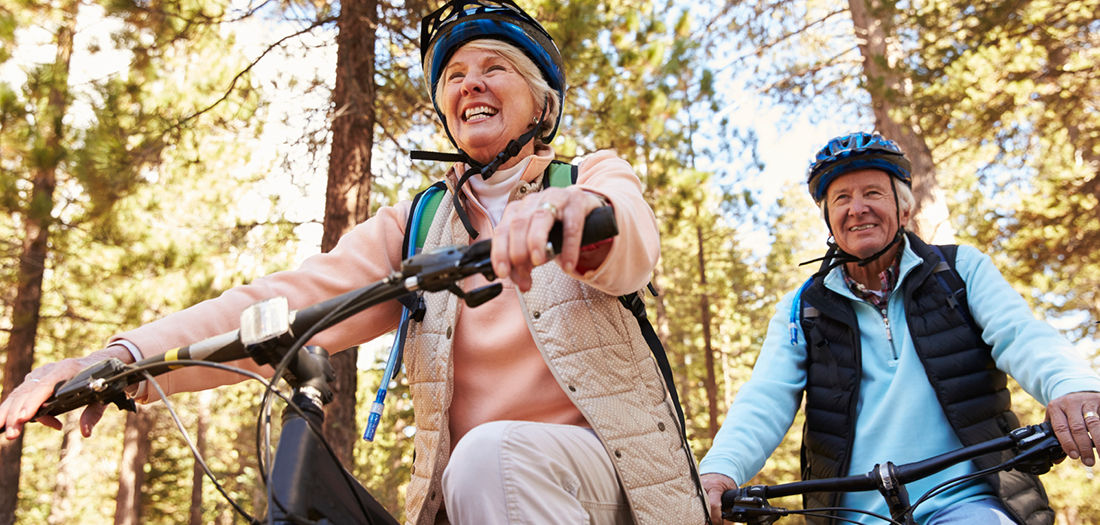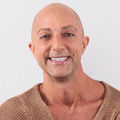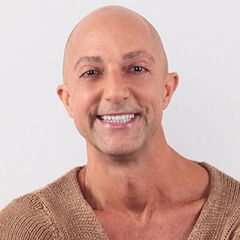The senior, or active aging, population is arguably the most heterogeneous group within the health club setting. As such, having a mindset for inclusive teaching is paramount for all health and fitness professionals. The following information is offered to help you better understand the active aging population so that you can work with them more effectively in today’s fitness environment.
Understanding the Demographic

Bernadette C. O’Brien is an ACE Certified Group Fitness Instructor and Personal Trainer in New Jersey. At age 86, she is the most chronologically enriched ACE spokesperson and spends her time advocating for the benefits of movement for the active aging population.
“We are a uniquely heterogeneous group in the gym,” O’Brien explains, “because many of us have different physical issues, different amounts of disposable income, ample amounts of free time to take classes both in the morning (when we need them) and evening (when we enjoy them), and hearts that can be the most loyal to group fitness instructors we love.”
Sue Grant, an ACE Certified Personal Trainer who created a series of Active Aging DVDs, agrees. “After 50 we grow so much differently. We cannot assume anything about people’s abilities based on their age. Many of my 90-year-old participants are more fit and vital than the 70-year-olds in my classes. We have to get to know and celebrate their beautiful individual differences and experiences. I recommend using stretch time to ask questions that will get them talking about their vast variety of life experiences. They are older and wiser, and everyone will win as they share their wisdom.”
The Facts
By 2030, an estimated 20 percent of Americans—more than 70 million people—will have passed their 65th birthday, 380,000 of whom will be over the age of 100. Consequently, it is important that the fitness industry focus on including boomers in its programming because people in general are living better—and longer—than in years past.
Here are some important points to consider when addressing the needs of the active aging population:
Disposable Income: Many in this population possess disposable income. To be sure, active agers hail from a variety of socioeconomic backgrounds, but those who have a bit of extra money are more likely to spend it on things like fitness memberships, classes and personal trainers, and conveniences such as smartphones and wearable fitness trackers. Activity trackers, in particular, can be helpful in increasing their incentive to move more. Additionally, explaining the values of N.E.A.T., or non-exercise activity thermogenesis, can help active agers understand the value of adding more movement throughout the day (Kravitz, 2006).
Heterogeneous in Body Issues: One common thread connecting most participants over the age of 50 is the fact that they almost always have some type of body issue. While some may have polypharmacy (taking several kinds of medication for diagnosed conditions), others may suffer through daily aches and pains due to conditions such as fibromyalgia to arthritis.
“Teaching for my peers,” says O’Brien, “means that we don’t go around at the start of each class telling the teacher what our issues are that day, because we have so much going on we’d never get to work out. Instead, today’s teacher has to be prepared with a plethora of progressions and regressions for those in the studio class environment.”
Appreciation of Time: This population does not like to waste time. “We come because we have to, because we need to, because it’s not a luxury, but a necessity,” O’Brien says. “Instructors can make sessions and classes fun, but they need to make every movement count. We don’t know how much time we have, and we certainly don’t want to waste time. Efficiency is key when putting together the lesson plans for my clients and classes.”
O’Brien recommends reminding classes and clients about the functional purpose of each move. “When you tell them how anything will make the rest of their day easier, they connect on a deeper level to the movement that much more,” says O’Brien. For example, when warming up the anterior tibialis during standing stationary marching, telling participants that “this will help our ankles get stronger for the rest of the day and help reduce falls” provides instant motivation for a desired behavior. Similarly, when opening and closing the fingers of the hands in circular patterns, telling participants that “this helps lubricate our wrists and fingers with synovial fluid so that we’ll be able to use our cellphones and pick things up easier later” gives those who feel stiffer in the morning a reason to connect to the movements.
Class Length: It’s About Time

Offering both 30-minute and 60-minute land and aquatic-based classes can be a great draw for this market. Shorter classes appeal to those who are new to exercise and helps address the common complaint of not having time to exercise. By contrast, longer classes appeal to those who want to spend more time moving and have the time in their schedules to do so.
Practical Tips for Health and Fitness Professionals
Counting down from the number 5, see how many of the following tips you already incorporate into the movement experiences you are creating for your clients:
- The 5 types of ages are chronological, functional, psychological, social and biological.
- The 4 types of trainable ages are all of the above except chronological.
- Incorporate a 3-dimensional warm-up into your clients’ workouts, making sure that the sagittal plane comes first, frontal plane is second and the transverse plane is third. Not only does this help warm up the spine in the safest way possible, it functionally mirrors the way we live. First, we start our day with movements in the sagittal plane (getting out of bed to go to the bathroom). Then we reach for things to the sides, and then we twist only after the spine becomes ready (McGill, 2016).
- Incorporate into each session at least one skill for each of the 2 sides of the brain: one skill for the left brain and one skill for the right brain (Brom and Kliegel, 2014).
Training the brain in all of its functions while engaging in some sort of movement defines neuroplasticity. One of the easiest and most common places to start incorporating neuroplastic training with clients is to use music. At the appropriate volume (90 decibels or lower) and beats per minute (appropriate to movement speed if used as foreground), music can boost motivation, memory (when incorporating lyrics) and meaning (Bidelman and Alain, 2015).
- Choose 1 main purpose for each class or workout. “We want to make champions of living,” says Grant, so we should design programs to make everyone able to live the concept of self-efficacy for each one’s needs.
As we continue to embrace the active agers by offering expanded, research-based programming, two considerations must occur with every decision. First, a complete understanding of what makes this demographic unique is imperative to program design. Second, having tangible, creative ideas for movement with our 5-4-3-2-1 approach will keep you alert to the needs of the growing active aging population.
References
American Council on Exercise (2014). ACE Senior Fitness Manual. San Diego, Calif.: American Council on Exercise.
Bidelman, G. M. and Alain, C. (2015). Musical training orchestrates coordinated neuroplasticity in auditory brainstem and cortex to counteract age-related declines in categorical vowel perception. Journal of Neuroscience, 35, 1240–1249.
Biscontini, L. (2016). SCW Active Aging Manual: The Life in Our Years. Chicago, Ill.: SCW Fitness Education.
Brom, S. and Kliegel, M. (2014). Improving everyday prospective memory performance in older adults: Comparing cognitive process and strategy training. Psychology of Aging, 29, 744–755.
Kravitz, L. (2006). A NEAT "new" strategy for weight control. IDEA Fitness Journal, 3, 4, 24-25.
McGill, S. (2016). Low Back Disorders (3rd ed.). Champaign, Ill.: Human Kinetics.




 by
by 











 by
by